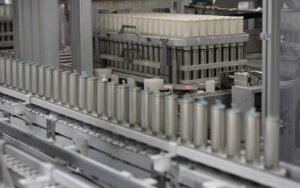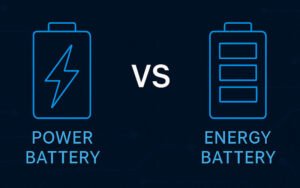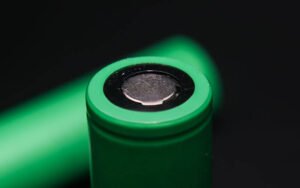Quick Answer: Power Battery vs Energy Battery
Power batteries (also called power cells) are designed for high current output and fast charging/discharging, making them ideal for electric tools, EV acceleration, and high-drain devices.
Energy batteries (or energy cells) prioritize higher energy density, offering longer run times and greater storage capacity, suitable for battery backup, energy storage systems (ESS), and long-range EV applications.
Understanding Power and Energy Batteries: A Strategic Breakdown
In today’s fast-evolving battery-powered world, selecting the right lithium battery is crucial—especially for engineers, system integrators, and procurement professionals sourcing from China.
At TENMAX, we often get questions like:
● “Should I use a power cell or energy cell for my e-mobility project?”
● “What battery type suits high-discharge UAVs or solar storage?”
This guide breaks down the key differences, use cases, and buying considerations—so you can confidently make informed choices.
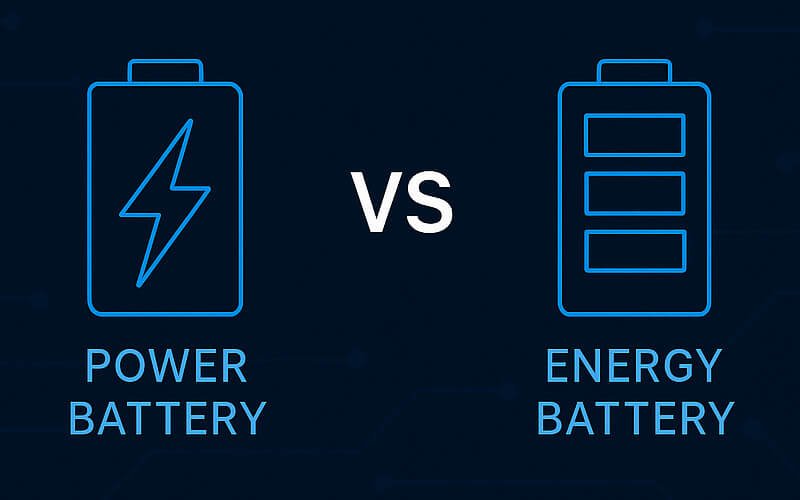
PART 1
Core Differences at a Glance
| Feature | Power Battery | Energy Battery |
|---|---|---|
| Primary Function | High current delivery (power) | High capacity storage (energy) |
| Discharge Rate | High (e.g. 10C–30C) | Low (typically <1C) |
| Energy Density | Lower (compact output bursts) | Higher (longer runtime) |
| Internal Resistance | Low | Moderate to high |
| Charging Time | Fast-charging capable | Generally slower |
| Heat Management | Requires robust cooling | Lower thermal stress |
| Typical Chemistry | LFP, LTO (stable under high current) | NCM, NCA, LFP (for longer runtimes) |
PART 2
Technical Design Differences
Power batteries are built for rapid response and high load cycles:
● Electrode materials use nano-sized particles for fast ion transport.
● Multi-tab and large-surface-area designs reduce internal resistance.
● Optimized for thermal management under large current flows.
Energy batteries, on the other hand, aim for maximum storage in limited space:
● Denser electrode packing for higher Wh/kg or Wh/L ratings.
● Structural designs prioritize volumetric efficiency over current flow.
👉 Insight: A battery can’t maximize both power and energy at once—it’s a design trade-off. Knowing your load profile is key.
PART 3
Application-Specific Guidance
Choosing between power and energy batteries isn’t just about specs—it’s about real-world performance in your product.
| Application | Best Battery Type | Why |
|---|---|---|
| Electric tools / drills | Power battery | Needs high torque, short bursts |
| UAVs / drones | Power battery | High current during takeoff and maneuvers |
| Electric scooters / motorcycles | Mixed (often power battery) | Acceleration demands high discharge |
| Solar ESS / off-grid storage | Energy battery | Stores energy over long durations |
| Telecom / UPS backup | Energy battery | Long standby time and reliability |
| Electric vehicles (EV) | Hybrid (energy for range + power for acceleration) | Dual performance balance |
👉 Still not sure which type fits your project?
Think of power batteries as sprinters—built for short bursts of high performance.
In contrast, energy batteries are like marathon runners—designed for long-distance endurance, but not for sudden power surges.
Choosing the right type depends on whether your application needs instant power or long-lasting runtime.

PART 4
Common Buyer Mistakes—and How to Avoid Them
Many overseas buyers (especially first-time importers) make costly errors when selecting cells for their projects. Here’s what to watch for:
● Mistake 1: Choosing only by capacity
A 10Ah cell may seem better than a 6Ah one, but if it can’t handle your required current, your system may shut down or overheat.
● Mistake 2: Ignoring C-rate (Discharge Rate)
Always match your peak current demand with the cell’s discharge rate (C-rating). Overloading a low-C cell shortens lifespan.
● Mistake 3: Mixing cell types in one pack
Never combine power cells and energy cells in one battery pack—they’ll age unevenly and create BMS management issues.
● Mistake 4: Overlooking BMS matching
Power batteries require a BMS tuned for high current; energy cells need protection against deep discharge. Get this wrong, and system safety is compromised.
PART 5
Why Choose TENMAX for Your Battery Needs?
At TENMAX, we specialize in cylindrical LFP lithium batteries—including power-type and energy-type cells—and custom battery packs with smart BMS integration. Our offerings include:

Power-Type Lithium-Ion Batteries
● 32140 Power Cells, 18650 Power Cells
● Delivers high current instantly for demanding loads
● Built with low internal resistance for efficiency
● Ideal for tools, EVs, and UAV applications
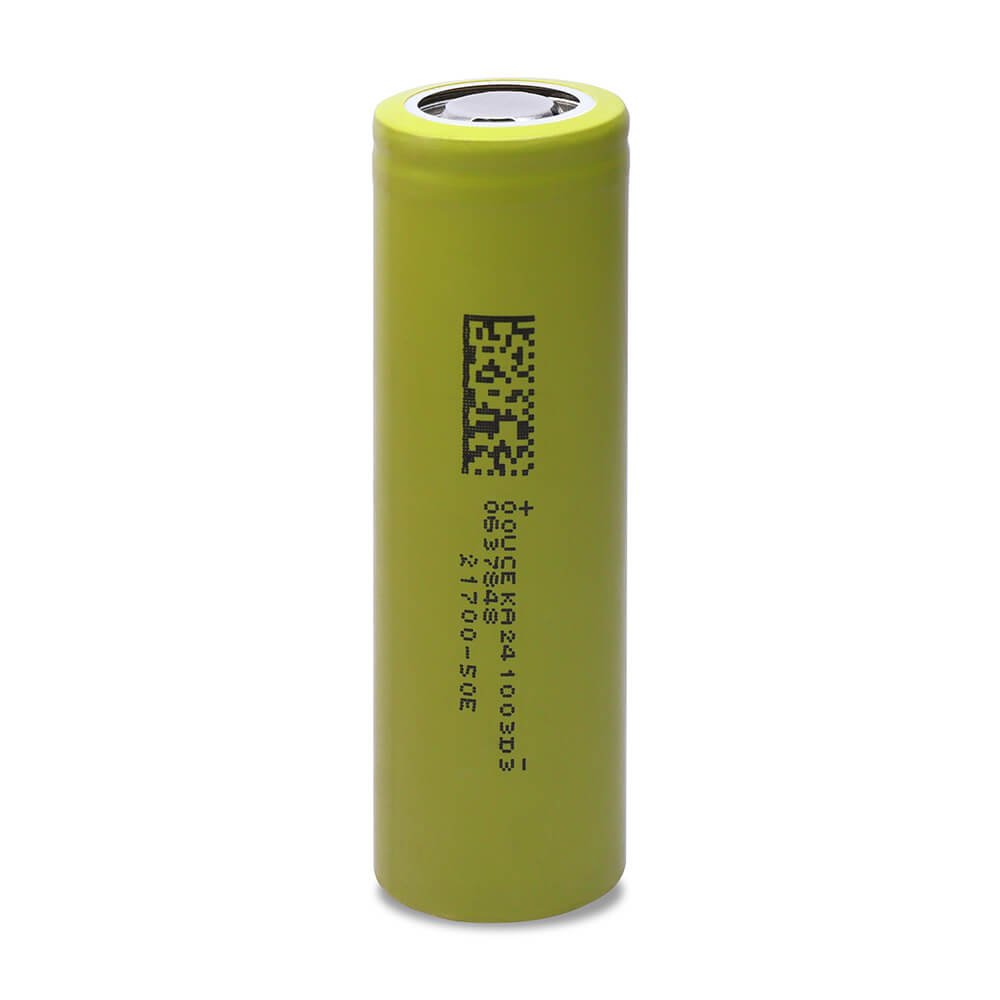
Energy-Type Lithium-Ion Batteries
● 21700 Energy Cells, 18650 Energy Cells
● Optimized for long runtime and stable output
● High energy density in compact formats
● Perfect for ESS, backup, and solar systems using safe LiFePO4 battery packs
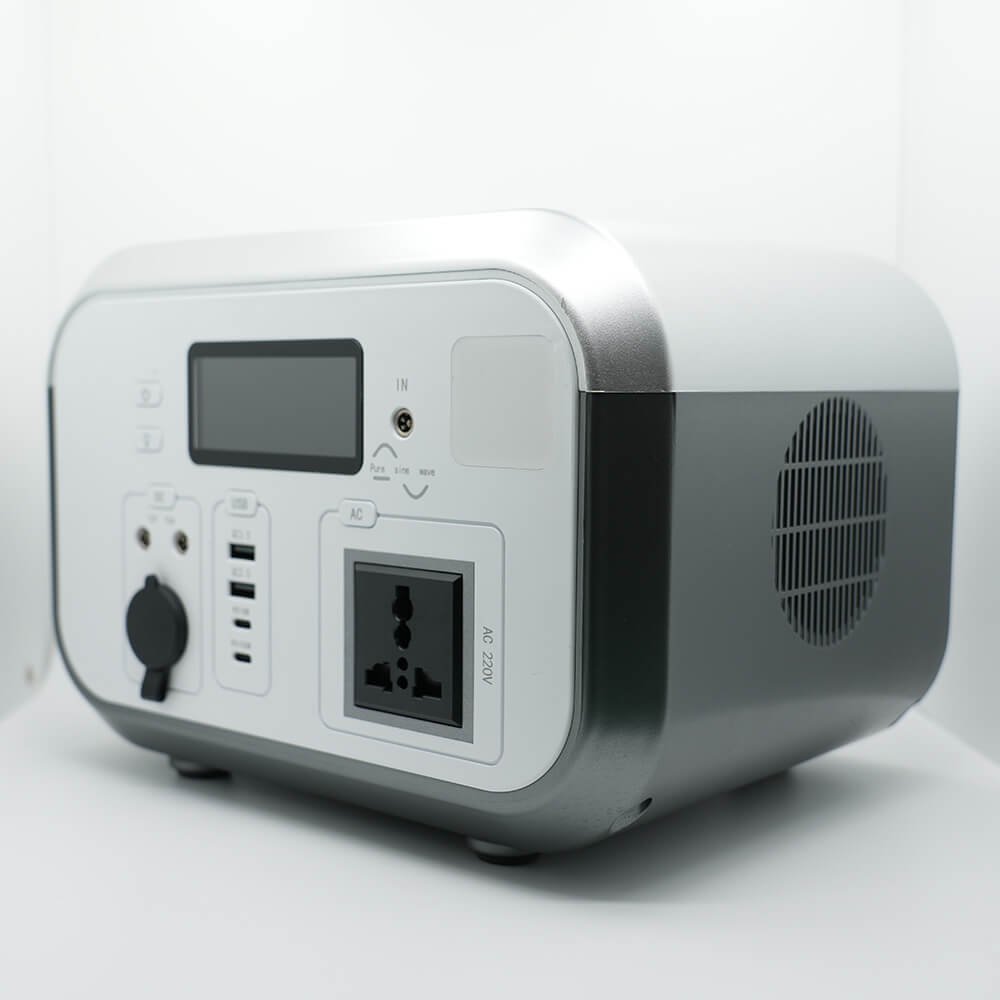
Custom Battery Packs:
● Advanced Battery Management Systems (BMS)
● Cell sorting, spot welding, pack assembly, and OEM branding
● Technical support for integration and certification
Whether you need high-rate cells for fast-drain devices or energy-dense packs for long-duration applications, TENMAX delivers precision, reliability, and global supply.
Contact us for a free quote or if you have any questions about our products.

